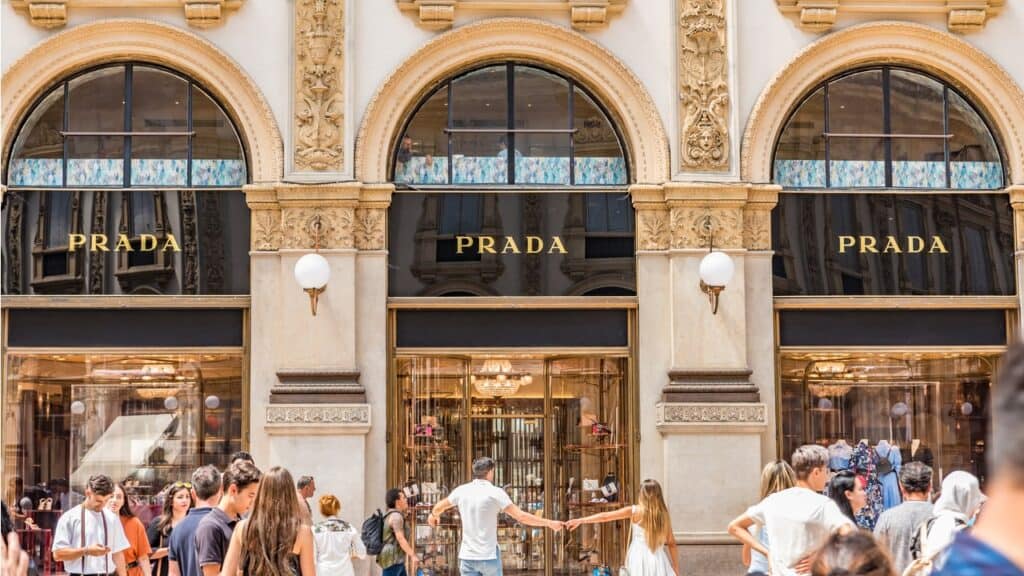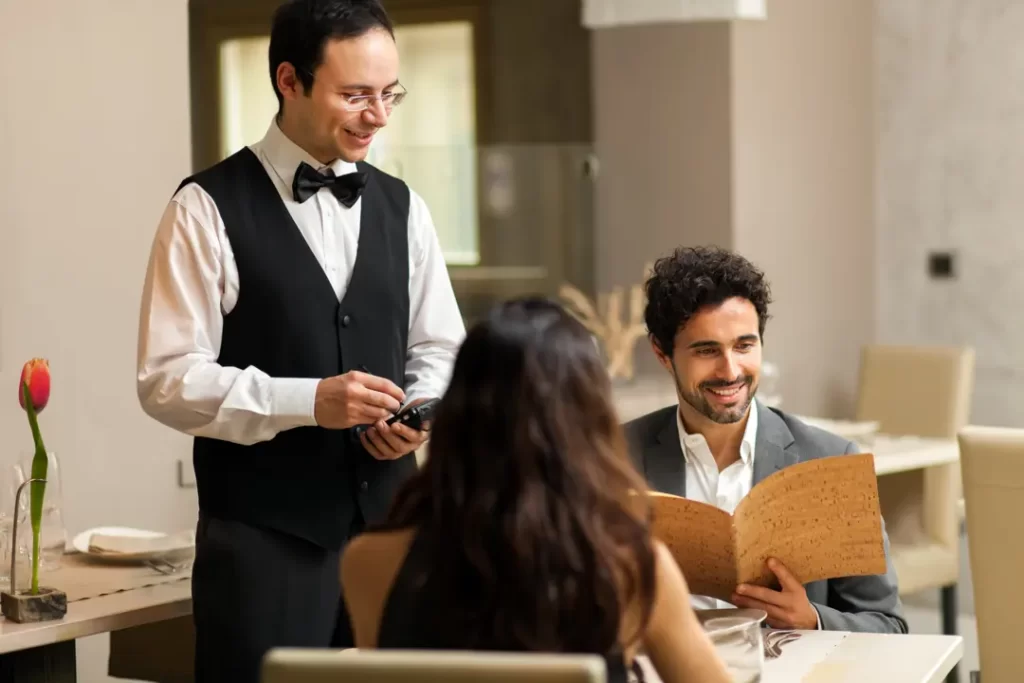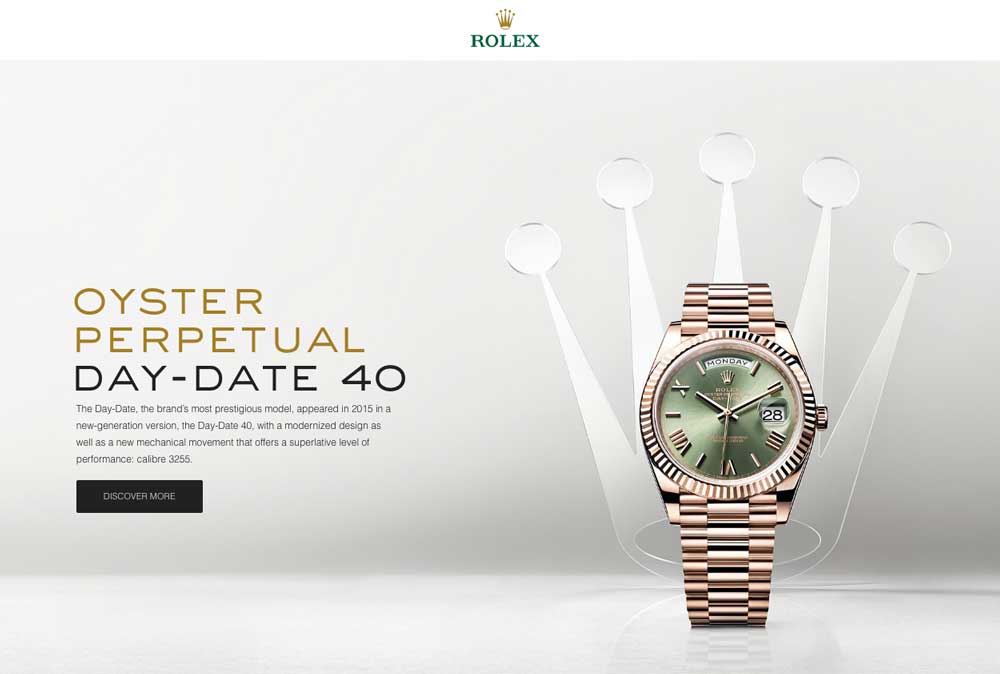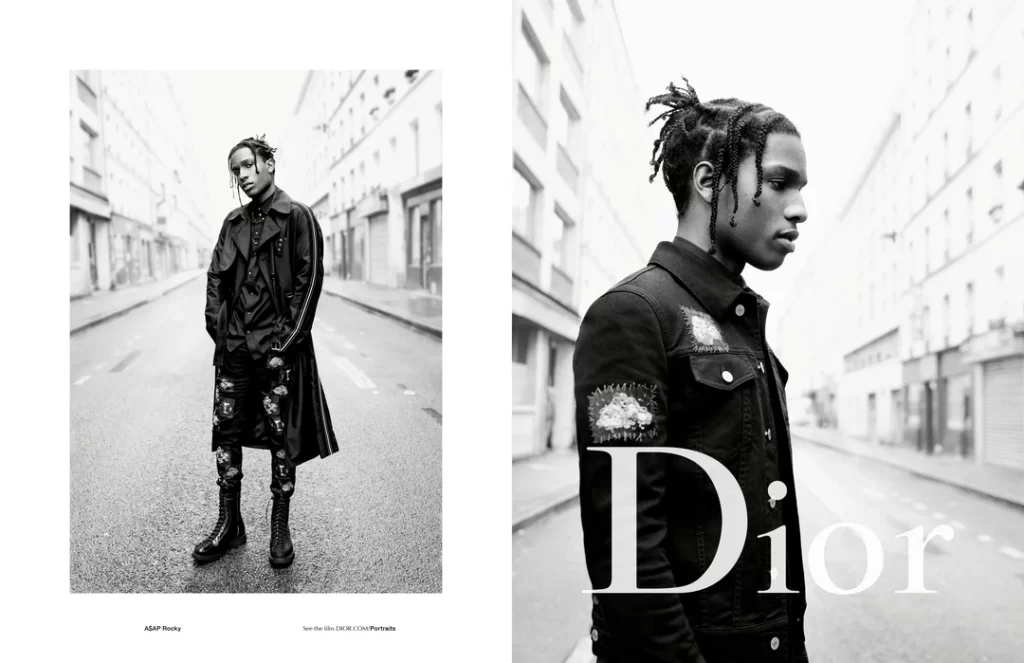Luxury Brand Marketing & High-End Branding
Luxury brands exist in a rarefied world of high prices, exceptional quality, heritage and pedigree, exclusivity, and aspirational identities. Marketing luxury products and services require a specialised approach that balances these brand attributes while understanding luxury consumers and trends. This comprehensive guide explores the fundamental principles, strategies, and examples of luxury brand marketing and high-end branding.
Table of Contents
Defining Luxury Brands

What determines when a product or service qualifies as luxurious? This labelling remains surprisingly difficult to pin down. We often rely more on visceral perceptions than concrete attributes. Still, most industry experts highlight factors like:
Scarcity Adds Value
Restricted access pressures demand a limited quantity of goods. Perceptions of low availability stimulate desire and make acquisition seem more meaningful.
High Price Tags Signify Status
Costly pricing denotes superior worth in the minds of many consumers. While “worth” constitutes subjective judgments, luxury brands leverage premium pricing to signal exceptional quality.
Prioritising Customer Service
Luxury brands promise personalised attention that pampers clients through exclusive experiences. Customers pay not just for products but for privileged treatment.
Focusing on Quality over Necessity
Unlike mainstream brands catering to mass-market tastes, luxury outlets emphasise artisanal details, aesthetics, heritage, and emotional resonance over practicality.
Of course, modern luxury exists on a spectrum. “Accessible” or “mass” luxury brands extend premium cachet to wider audiences through lower price points. Genuine haute luxury products remain prohibitively expensive for average earners.
A luxury brand typically exhibits the following characteristics:
High Quality and Craftsmanship
- Luxury products exhibit exceptional quality in their materials, construction, durability, aesthetics and more.
- There is a focus on meticulous design, engineering, technique and human craftsmanship.
- Strict quality control ensures consistency
Premium Pricing
- Priced significantly above non-luxury goods in the category
- High price helps create exclusivity and desirability
- Consumers pay for quality materials, craftsmanship, brand prestige
Heritage and History
- Many luxury houses have long, rich histories spanning decades or more
- Their narratives focus on founder stories, milestones, and traditions
- Conveying brand heritage helps create symbolic value
Prestige and Status
- Luxury is aspirational and confers status or self-esteem
- Brands cultivate an elite “club” only for wealthy and discerning clients
- Owning luxury signifies taste, sophistication and privilege
Customer Experience
- Luxury brands offer a superior, even indulgent, client experience
- Flagship stores, VIP services, personalised shopping experiences
- Making clients feel special, understood and attended to
This combination of functional excellence and symbolic meaning defines actual luxury brands and sets the stage for how they approach marketing.
Understanding the Luxury Consumer

In marketing luxury brands, it is essential to understand the target luxury consumer intimately. Some key insights:
Demographics
Luxury buyers come from varied backgrounds today. Common target categories include:
HENRYs (High Earners Not Rich Yet)
Young professionals earning sizable wages lack the accumulated assets of older luxury consumers but crave status symbols and experiential spending.
Middle-Class Aspirationals
Mid-market consumers desire luxe trappings but lack the means for extravagance. Brand diffusion targets this group with entry-level luxury lines.
Women
Across income brackets, women drive 70-80% of consumer purchasing through primary and influential buying. Bonding over brands offers social currency.
Millennials & Gen Z
Younger demos embrace clothing and accessories as wearable status updates. Secondhand platforms also expand luxury access. Ethics and sustainability matter more to some.
Global jet setters
Nomadic ultra-high-net-worth individuals evaluate brands across global retail destinations and ecommerce. Appealing to well-traveled tastes supports sales.
China & Developing Markets
China, Brazil, Mexico and other developing economies nurture enthusiastic emerging luxury buyers as wealth multiplies across Asia, Russia, India, the Middle East and beyond.
Understanding nuances across luxury shopper psychographics fuels marketing efficiencies. Localised cultural customisation also helps brands expand into overseas locales.
Psychographics
- Appreciate fine quality, details, craftsmanship
- Seek self-reward, self-gifting, self-expression
- Value exclusivity, prestige, legacy
- Strong self-image, confidence, sophistication
- Travel widely for business and leisure
Motivations
- Functional – Superior quality, craftsmanship, aesthetics
- Experimental – Sensory pleasure, aesthetics, indulgence
- Symbolic – Status, self-identity, public image
- Relational – Family dynasty, business circles, clubs
Behaviours
- Extremely selective, not easily swayed
- Independent thinking, confident taste
- Want to feel understood as an individual
- Seek personalised experiences and service
- Mix iconic classics with discoveries
With more profound insight into the luxury buyer, brands can craft targeted positioning and messaging.
Crafting a Luxury Brand Identity

A brand’s identity encompasses its vision, principles, personality, promise and more. Luxury brands, in particular, must crystallise a compelling identity that captures clients. Key elements include:
A Clear Brand Vision and Essence
- Articulate brand vision – “To be the pinnacle of…”
- Distill brand essence statement – “For discerning individuals who…”
Brand Values and Codes
- Quality, craftsmanship, heritage, exclusivity, prestige
- Sophistication, excellence, indulgence, distinction
Brand Personality and Tone
- Elegant, glamorous, prestigious, worldly, refined
- Intelligent, artistic, cultured, tasteful, charming
Brand Narrative and Mythology
- Founder stories, milestones, traditions
- Royalty, aristocracy, celebrities and brand devotees
- Prominent family ownership lends continuity
With a clearly defined brand identity, marketing campaigns and touchpoints stay aligned and on brand.
Principles of Luxury Brand Marketing

While marketing fundamentals apply, luxury brands also operate according to distinct principles tailored to their lofty position.
Reinforce Exclusivity
- Convey selectivity – challenging to obtain, limited access
- Cultivate VIP lists and tiers – prices upon request
- Restrict distribution to control brand experience
Balance Consistency and Innovation
- Uphold legacy, craftsmanship and iconic classics
- Introduce novel, creative elements and offerings
Blend Art and Science
- Leverage brand charisma, uniqueness, even magic
- Deploy analytics on client desires and spending
Focus on Individual Relationships
- Provide exceptional personalised service
- Customer advisors guide across channels
- CRM tracks history and preferences
Manage Brand Experience
- Flagship stores in prime destinations
- Consistency across all touchpoints
- Align staff attitude, product displays
Following these principles helps luxury brands walk the line between exclusivity and approachability.
Key Pillars of Luxury Brand Marketing
Luxury brand marketing relies on specialised strategies across four main pillars.
Product and Innovation
- New product launches generate buzz
- Limited editions add collectibility
- Showcase craftsmanship stories
Customer Engagement
- Personalised experiences and advisors
- CRM and customer intelligence
- Events foster brand community
Brand Communication
- Reinforce heritage and codes
- Align symbols, icons, ambassadors
- Advertising sets the emotional tone
Distribution and Retail
- Flagship stores in prestigious locales
- Boutiques reflect brand identity
- Consistent experience across channels
When these areas work together, the luxury brand resonates masterfully with clients.
Crafting a Luxury Brand Story

Storytelling is vital for luxury brands seeking to inspire clients rationally and emotionally. Critical principles for telling compelling stories include:
Illuminate Brand Heritage
Bring history alive through:
- Founder origins and early development
- Milestones, innovations and achievements
- Traditions, values and codes carried forward
Spotlight Craftsmanship
Shed light on luxury craftsmanship:
- Rare materials and sourcing – diamonds, leathers, precious metals, exotic woods
- Techniques passed down over generations – goldsmithing, stone setting, embroidery, engraving
- Master artisans nurturing their craft over decades
Convey Passion and Devotion
Illustrate passion through:
- Design sketches and prototypes showing attention to each detail
- Painstaking steps by workshop artisans devoted to perfection
- Clients treasure beloved items over their lifetime
Share Client Affinity Stories
Feature prominent devotees:
- Which public figures and celebrities prefer the brand?
- Multi-generational families who only buy from the brand
- Loyal clients with collections spanning decades
Storytelling helps transform luxury brands into coveted icons, beckoning clients to enter their exceptional world.
Best Practice Brand Archetypes

What blueprints constitute well-honed luxury brand identities? Certain tropes prevail. Common luxury branding archetypes include:
The Crown Jewel
Regal language, crests, and lore around kings, rulers, and dynasties font convey noble heritage – Burberry, Louis Vuitton, Versace. Timelessness matters more than trendiness.
The Discreet Power Player
Subtle, almost hidden brand markings signal quiet confidence and establishment clout. Plainspoken marketing avoids showiness. See Bottega Veneta, Brunello Cucinelli, Loro Piana.
The Iconoclast
Daring designs, cheeky messages, and a bit of controversy typify rule-breaking rebel brands. Expect the unexpected with Agent Provocateur Alexander McQueen and Comme des Garçons.
The Trend Creator
Fashion-forward brands drive the runway and street style trends at the bleeding edge of the avant-garde. See Balenciaga, YSL, Off-White, Alexander Wang.
The New Classicist
Reinventions of iconic pieces fuse innovation with timeless aesthetics for instant heirloom status – the Chanel jacket, Hermes Birkin bag, Cartier LOVE bracelet etc.
The Functional Artist
Technical know-how melds with stylistic splendour in watches, jewellery, cars, and yachts elevated to artworks. Common in Swiss watches, German machinery, etc.
The House of Luxe Craft
Meticulous generations-old techniques course through heritage brands focused on leather, glassworks, grooming, alcohol, etc. – John Lobb shoes, Baccarat crystal, Purdey guns.
The Sanctuary
Resort-style havens deliver pampering hospitality and rejuvenating experiences via hotels, restaurants, and destination spas. Aman Resorts typifies this profile.
The most potent luxury brands interweave multiple motifs in a singular vision that permeates offices, stores, sites, staff and all touchpoints—consistency matters.
Luxury Marketing Channels and Activation
Luxury brands leverage conventional and niche marketing channels and activations to promote products and experiences aligned with brand prestige.
Advertising and Promotion
- Print – glossy high-end magazines
- Outdoor – selected premium locations
- Event sponsorship – arts, sports, fashion
Digital Presence and Social Media
- Elegant brand website reflecting identity
- Targeted social media – Instagram, WeChat
- Online flagship store – aligned experience
Influencer Engagement
- Loans/gifts to select celebrities
- Popular yet aligned brand devotees
- Focus on genuine affinity over hard sell
Partnerships and Collaborations
- Crossover collections with designers, artists
- Co-branded promotions with aligned brands – cars, spirits, properties
- Limited-edition product releases
Retail Environment and Events
- Flagship stores in world capitals
- Intimate events at boutiques
- Luxury consumer shows and exhibitions
Orchestrating initiatives across channels cultivates the luxury brand’s aura.
Measuring Success: Tracking Metrics & Milestones
Given substantial investments, luxury brands closely monitor performance. Key benchmarks assess:
- Sales: Meeting revenue goals
- Market share expansion: Outpacing category/competition
- Brand desirability: Rising perceptions of prestige and trendsetting cachet
- Engagement analytics: Likes, traffic, chatter rates
- Media metrics: Ad equivalencies, impression values, visibility
- Loyalty member counts and activity rates
- Stock price valuations and profits for public companies
- Philanthropic indices: Funds raised, participation in related programs
Positive output across quantitative and qualitative criteria validate strategies delivering actualised aspiration matched with exclusionary experiences worthy of brand stature and pricing power.
Notable Luxury Marketing Campaigns

Some stellar examples of luxury brand marketing campaigns:
| Brand | Campaign | Description |
| Dior | Dioriviera | Showcased a cruise line with Marion Cotillard amid stunning coastal imagery |
| Louis Vuitton | Spirit of Travel | Evoked emotion via travel images and celebrities on journeys |
| Chanel | No.5 | Iconic scents positioned via exotic storytelling and famous feminine faces |
| Rolex | Every Rolex Tells a Story | Spotlighted innovative watchmaking via prominent brand devotees |
| Dom Perignon | Vintage Campaigns | Romanticised champagne via black-and-white “vintage” style ads |
These campaigns fused luxury product benefits with aspirational branding on an emotional level.
Key Takeaways and Future Outlook
Marketing luxury requires maintaining prestige on the one hand and approachability on the other – a delicate balancing act. However, luxury brands can retain their mystique while attracting aficionados with brand heritage, a discerning clientele, and selected messaging and positioning.
As the luxury market grows worldwide, new segments and more diverse demographics will expand opportunities if brands stay loyal to their DNA. Digital channels can complement the tactile, human brand experience when handled judiciously. As long as quality, craftsmanship and pioneering spirit endure, the future glitters brightly for innovative luxury brand marketing.
Frequently Asked Questions
What’s most important in luxury brand marketing – emotion or functionality?
While functionality matters through exceptional quality and craftsmanship, emotion creates attachment and loyalty. Experiential satisfaction and symbolic ownership convey identity and status that functional attributes alone do not.
How do luxury brands balance timelessness with staying current and fresh?
Iconic luxury brands remain faithful to their heritage, craftsmanship and aesthetics for timelessness while judiciously releasing updated classics or more daring yet aligned new designs to evolve with the times. Limited capsule collections also stimulate interest.
Should luxury brands lower prices to attract new consumers?
Lowering prices can erode perceived value and make the brand seem less exclusive or prestigious. Luxury brands may offer some entry-level items but should never compromise on quality. Instead, they can cultivate new markets where the brand still confers status.
Do luxury brands need a digital marketing presence?
As luxury buyers migrate online, brands need an elegant digital presence that aligns aesthetically with the brand. Strategic social media, influencer engagement and virtual experiences maintain exclusivity while reaching younger or more global luxury aficionados.
How can luxury brands balance consistent branding with customisation?
From clienteling apps to on-site craftsmanship, customisation allows luxury brands to provide tailored experiences aligned with their identity. Their ambience, quality and service should remain consistent even if specific products or services are adapted. This balances personalisation with branding.
